Bordeaux en primeur 2020: Big releases and an upward trend in prices
The sixth week of the Bordeaux 2020 campaign was dominated by the release of the entire portfolio of Domaines Baron de Rothschild, including Lafite, writes Colin Hay.
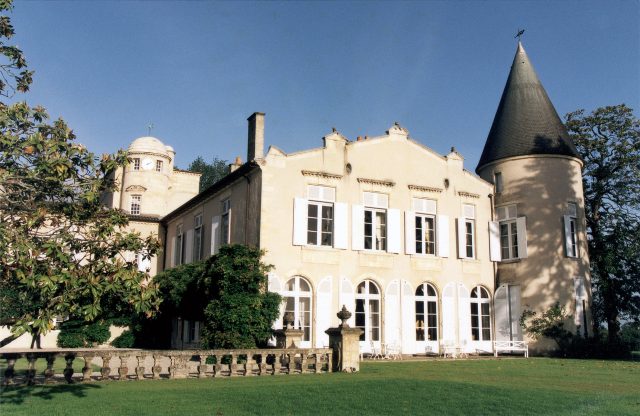
It also saw a consolidation and intensification in the upward trace in prices, with an average price rise relative to the 2019s of over 12 per cent in sterling-equivalent terms (it was 9% last week).
Like the release of Cheval Blanc at the very start of the campaign, that of Lafite Rothschild and its stablemate almost six weeks on came as something of a surprise. It is interesting in two respects above all – the timing and the price itself. Both have implications for the rest of the campaign.
Though this is an inference on my part, I suspect that the timing – much earlier in the evolution of the campaign than was imagined – is a simple indication of frustration with the languid pace of releases to date. One might imagine that DRB Lafite had fixed already in their minds a price and a release date and, in the end, simply decided to stick with the latter (and probably the former too) despite the campaign now running a full two weeks or so behind their initial expectations (and hopes).
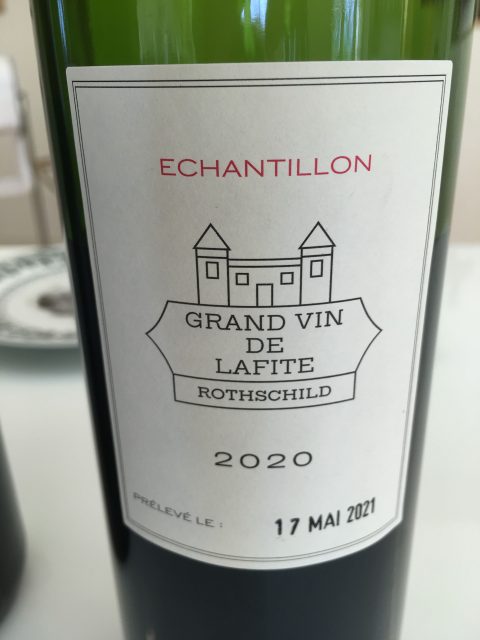
There is a certain danger in this for other properties. The risk for them is that the attention that would normally be lavished on their releases, especially in a relatively slow and long drawn-out campaign like this now threatens to become, is lost or at least partially refocussed on the first growths.
And there is an even worse scenario here, too. That is that the first growths all release in the next few days. The effect would be to bring the campaign to a rapid and premature conclusion – prompting, in the process, a rather uncoordinated deluge of releases that the on-trade has no capacity to deal with simultaneously.
That will probably be avoided, but it is certainly a risk. Either way, Lafite’s move will serve both to focus minds and undoubtedly to accelerate the pace of releases this week.
If that is the only substantive effect, negociants and international brokers and merchants will be deeply relieved. And what of DBR Lafite’s prices? They, too, are fascinating.
Lafite Rothschild itself is released as an ex negoce. price of €475 per bottle, up 19.9% on the 2019 (€396); the effect is a sterling-equivalent hike in price of 15%. The wine is, of course, extremely well backed by the full range of international critics and the early evidence suggests, unremarkably, that it is selling through in London (with pre-orders and existing allocations largely exhausting the available supply).
But, as the following graphic shows, the price increase is the largest of the big three to have released so far. It might even be seen as something of a repositioning in the market (depending of course on whether the other first growths will follow suit).
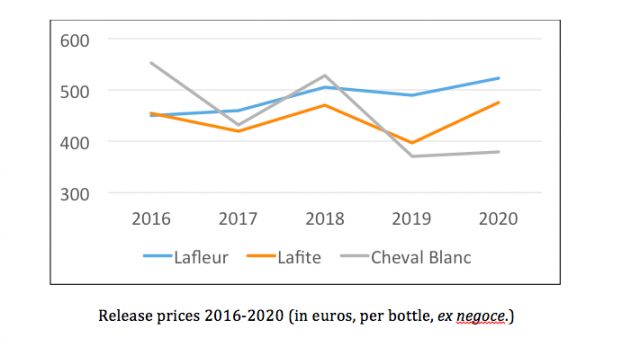
But the relative re-positioning of Cheval Blanc and Lafite since 2016 is very interesting and may well have significant implications for the secondary market for both wines.
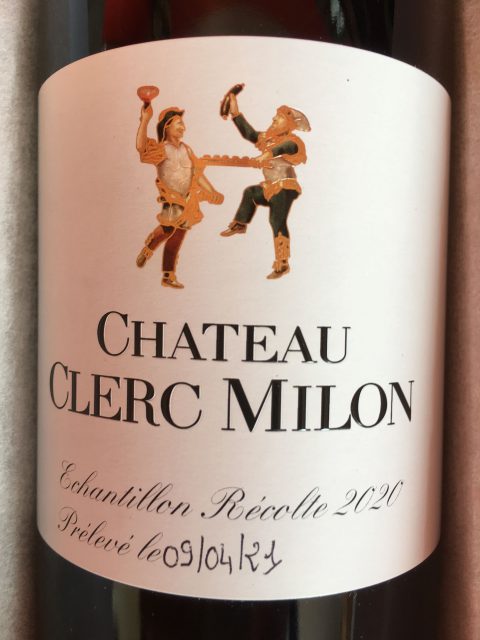
Release prices 2016-2020 (in euros, per bottle, ex negoce.)
Returning to the en primeur campaign itself, Carruades de Lafite was released at the same time as the grand vin, up 17.2% on the 2019 (at €170 as compared to €145 for the 2019); Duhart Milon was released at €55, up 11% on the 2019 (a very similar increase to that of its nearest and more direct competitor, Clerc-Milon); and Evangile was released at a seemingly quite ambitious €180, up a full 33.3% on the 2019.
The much steeper increase in release price for Evangile compared to Duhart arguably reflects two things. The first is the slight change in style (and, indeed, perceived quality, judging by the critical acclaim) at Evangile. The second is the suggestion that Duhart’s price rise was in effect capped to keep the wine below the price of the earlier-releasing Clerc-Milon. If correct, both are interesting – suggestive as they are of different degrees of price competitiveness in different parts of the en primeur market.
The last week has also seen the release of a number of high-scoring wines from Margaux. First out of the blocks was Rauzan-Ségla, releasing at €66 per bottle ex negoce. in comparison with the 2019s €54 (up 22.2%). In sterling-equivalent terms that still represents an increase of 16.7% (£798IB for 12, as compared to £684 for the 2019).
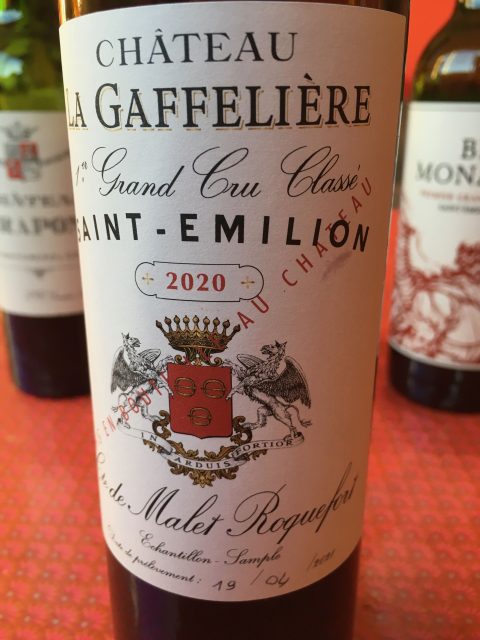
Though it has not been as widely tasted, Durfort-Vivens is scarcely less-well backed by those critics who have tasted it. It has been released at an ex negoce price of €43.20 (up just over 16% on the 2019’s €37.20). Giscours, too, was released at €40.80 ex negoce per bottle (over 20% higher than the very well if quite similarly-rated 2019).
In St Emilion, we see a divergence in strategies from the two big releases of the last week. The first to move here was La Gaffelière, a fabulous wine in this vintage that is very well rated by the critics. It was released at €48 ex negoce. per bottle in comparison with the 2019’s €40.80 (an increase of 17.6%). Despite the relatively steep increase in price (arguably justified given the steep upward trajectory here in recent vintages), it seems to have sold very well in London.
Yet a similarly highly rated and also up-and-coming Beauséjour-Bécot was released just a couple of days later with at a much more modest 5.9% increase in price in sterling equivalent terms (at £510 for a case of 12 bottles in bond in London). It, too, can be expected to fly.
Finally, we have a couple of further interesting releases in the Médoc. The first is from the perennial Pauillac favourite, Grand-Puy Lacoste which has released at £607 in bond for a case of 12, just over 12% up on the 2019’s release price of £540.
And, despite sending no samples to the international critics (as in 2019) and chastened perhaps by the relative lack of support for its (excellent) 2019 in similar circumstances, Gruaud Larose has released its 2020 at a sterling-equivalent increase of 6.9% (at £695 in bond for a case of 12).
Both the 2019 and 2020, which I was lucky enough to taste from the chateau, are excellent in my view; but without the backing of leading international critics it is difficult to see many takers for their latest en primeur offering.
Full details of this week’s most notable new releases:
Batailley (£337 in bond for 12, essentially the same price as the 2019 (£336); NM 93-95; JA 94; LPB 89-91+).
Beauséjour-Bécot (£510 in bond for 12, up 5.9% (£480); NM 92-94; JA 95; LPB 95-97; CH 94-96).
Cantenac Brown (£412 in bond for 12, up 7.3% on the 2019 (£374); NM 94-96; JA 93; LPB 91-93+).
Carruades de Lafite (£2124 in bond from 12, up 12% on the 2019 (£1896); NM 89-91; JA 92; JS 96-97; LPB 91-93).
Clerc Milon (£690 in bond for 12, up 10.6% on the 2019 (£624); NM 91-93; JA 94; LPB 92-94; JS 95-96; JD 93-95; CH 93-95).
Duhart Milon (£684 in bond for 12, up 9.6% on the 2019 (£624); NM 90-92; LPB 91-93+; JS 95-96; AG 90-92; CH 94-96).
Durfort-Vivens (528 in bond for 12, up 20.5% on the 2019 (£438); JA 94; JL for JR 17.5; CH 96-98+).
L’Evangile (£2220 in bond for 12, up 26.7 % on the 2019 (£1752); JA 98; LPB 96-98+; CH 96-98).
La Gaffelière (£600 in bond for 12, up 19% on the 2019 (£505); NM 96-98; JS 96-97; LBP 96-98; CH 95-97).
Giscours (£492 in bond for 12, up 16.6% on the 2019 (£422); NM 93-95; JA 95; JS 96-97; LPB 92-94+).
Gloria (£317 in bond for 12, up 5.7% on the 2019 (£300); NM 93-95; JS 93-95; AG 91-93; LPB 92-94).
Grand-Puy Lacoste (£607 in bond for 12, up 12.4% on the 2019 (£540); NM 95-97; JS 96-97).
Gruaud Larose (£695 in bond for 12, up 6.9% on the 2019 (£650); JA 95; JL for JR 17.5-; CH 93-95).
Partner Content
Haut Batailley (£470 in bond for 12, up 9.3% on the 2019 (£430); NM 92-94; JS 94-95; LPB 92-94; AG 91-93; CH 94-96).
Lafite Rothschild (£5880 in bond for 12, up 15% on the 2019 (£5112); NM 96-98; JS 99-100; LPB 96-98+; JD 97-99; AG 95-97; CH 98-100).
Larcis Ducasse (£664 in bond for 12, up £19% on the 2019 (£558); NM 94-96; JA 97; LPB 96-98; AG 95-97).
Rauzan-Ségla (£798 in bond for 12, up 16.7% on the 2019 (£684); NM 95-97; AG 95-97; CH 96-98+)
St Pierre (£462 in bond for 12, up 9.5% on the 2019 (£422); NM 92-94; JA 94; JS 95-96; LPB 94-96; AG 93-95).
Talbot (£478 in bond for 12, up 13.2% on the 2019 (£422); NM 92-94; JA 95; JS 94-95; JD 91-93; LPB 90-92; CH 93-95).
My tasting notes for each new release:
Batailley (Pauillac; 70% Cabernet Sauvignon; 26% Merlot; 2% Petit Verdot; 2% Cabernet Franc). This is lovely and not only redolent of the appellation, but redolent in fact of Batailley itself – it’s quite an easy pick. On the nose this has the floral component of the vintage – here, lilacs and peonies – but there is also that smoky, gamey almost slightly feral note that I associate with Batailley and a little signature that comes from the way oak is used her.
Finally, there is a delicious new season walnut element that combines so well with the plump rich cherry and dark berry fruit. This is slightly cool on the entry and that serves to prepare the palate well for a lovely gracious unfurling of the bright yet elegant cherry fruit in and through the mid-palate before the fine grained by nicely textural tannins seem to grip hold of the fruit and draw it back to the mineral spine of the wine to produce an impressive tapered juicy finish. In short, this has a lovely mouthfeel and an impressive structure. Very fine indeed, this is a wine that is now reliably excellent.
Beauséjour-Bécot (St Emilion; from a vineyard of 17 hectares on an argilo-calcaire plateau terroir just behind Chateau Canon; 85% Merlot; 13% Cabernet Franc; 2% Cabernet Sauvignon; average age of the vines is 45 years; final yield of 42 hl/ha; the wine is aged for 16 months in a combination of new oak barrels (65%) and vats, amphorae and larger oak vessels (35%); Thomas Duclos is the consultant here). The latest in a recent series of great wines and possibly the greatest of them all – though the 2019 certainly offers stiff competition; one also has the sense that there is still so much to come with this wine – it’s open, yes, but far from revealing all of its secrets.
Very bright, very pure and very bold and direct on the nose with plump, rich, crunchy black cherries and wild blueberries, a hint of walnut oil from the ripe pips, a slight suggestion of freshly baked gingerbread or Christmas cake and a note of cinnamon. On the palate this is, again, rich and ample, but the extraordinarily fine-grained tannins rein in the fruit, bringing it back and then stretching it out along the spine whilst revealing their grippy-grainy-chalky character. This is very much a wine from a calcaire terroir and I love that. It has a fabulously lifted, plump juicy and sapid finish very much at the top of the mouth – and very long too. Very refreshing, like all of the best wines of the appellation in this vintage.
Cantenac Brown (Margaux; 67% Cabernet Sauvignon; 33% Merlot; a final yield of 36 hl/ha; aging in oak barrels for 18 months, 60% of which are new; just 51% of the production selected for the grand vin; 13.5% alcohol). Tasted at the UGC in Paris and then from the chateau itself. This is quite open and aromatic, with a lovely prominent cassis fruit, with brambles and blackberries, black cherries too and a hint of dark chocolate, though fewer floral elements than many of its peers.
On the palate this is pure and bright and crisp, with soft and compact tannins, an impressive density to the mid-palate which is nicely delineated and detailed. More precise and focussed than in recent vintages, the mid-palate has a lovely crystalline quality, though it perhaps lacks just a little Margaux typicity. I particularly love the almost pulsating finish which comes from the tension between the grip of the tannins and the freshness of the fruit. The gentle maceration through infusion plays a big part in the textural complexity and finesse of this impressive wine.
Carruades de Lafite-Rothschild (Pauillac; 52% Cabernet Sauvignon; 42% Merlot; 3% Cabernet Franc; 3% Petit Verdot; around 13% alcohol). Tasted with Eric Kohler at Chateau Lafite Rothschild. This is pure, lifted and creamy with an engaging nose of blood orange, brambles and blackberries. Texturally, too, this is very interesting and quite complex. The attack is immediately svelte and limpid with a nice open texture despite the fine-grained tannins and the compact and concentrated mid-palate; and there is plenty of lift from both the salinity and the acidity working together. As a consequence, this finishes very much at the top of the mouth. The Merlot contributes a lot to the density of the mid-palate. A strong Carruades in this vintage – better in my view than it has been in recent vintages.
Clerc-Milon (Pauillac; 53% Cabernet Sauvignon; 37% Merlot; 8% Cabernet Franc; 2% Petit Verdot; aging in oak barrels, 50% of which are new; pH 3.82; 13.3% alcohol). Tasted over Zoom with Jean-Emmanuel Danjoy. This exudes cool, calm tranquillity. Pure and fresh, supple, soft and more seductive than it has ever been. The attack is very gentle and soft and the wine builds gradually with little waves of juiciness as the tannins seem to engage, mapping out the contours of the densely packed and layered mid-palate before we reach a kind of plateau after which the wine slowly gathers itself for a long, tapered and very elegant finale.
This is characterised by the signature saline minerality of Clerc which, apparently, comes from the more calcaire-rich terroirs close to the estuary itself (bringing to the wine something almost reminiscent of Canon in St Emilion!). The wine-making here seems to have attained a new level; the quality of the tannin-management is exceptional and that brings an exciting structural complexity to this that guarantees, I think, a wonderful future for this wine.
Duhart-Milion (Pauillac; 78% Cabernet Sauvignon; 22% Merlot; a final yield of 36hl/ha;
13.1% alcohol; this represents 65% of the total production). Tasted with Eric Kohler at Chateau Lafite Rothschild. A really impressive Duhart-Milon certainly at the level of the 2019. On the nose this is both very open and expressive and at the same time very pure and precise with plump and crunchy red cherries, blackcurrants and brambles, a touch of cedar and hazelnut, with a pleasing graphite and stony minerality. On the palate this fruit is a shade lighter, with crisp, fresh redcurrants and cranberries joining the cassis and bramble notes from the nose. This has impressive depth and concentration, a nice compact structure and a long, sapid and rather tender tapering finish. This is very elegant and accomplished with a cool slightly austere authority to it which I really like.
Durfort-Vivens (Margaux; from a vineyard of 62 hectares on deep gravel; 88% Cabernet Sauvignon; 12% Merlot; certified organic and biodynamic; aging in amphorae (30%) and new oak barrels (70%) for 18 months; certified organic and biodynamic; a final yield of 32 hl/ha; 13.65% alcohol). Tasted first from a sample sent by the property and then as part of a mini-vertical with Gonzagues Lurton at the Chateau. This is glorious, opulent, bright incredibly lifted, fresh and floral, and archetypally Margaux. A nose so beautiful you want to keep it forever. It needs a little time to come to life as it gently inhales, but when it does we have a quite brilliant expression of the parfumier’s floral armoury on display – violets, essence of rose petal, saffron, absolu of iris, even a hint of passion flower.
This is a beautifully natural wine and the product of a very gentle vinification; it immediately feels composed, relaxed and confident in itself. This wine is all about purity. A beautiful subtle soft and gentle Cabernet nose with a very pure and sharply focussed, but at the same delicate, bright cassis and raspberry fruit, becoming fuller and more creamy with aeration, with lovely graphite and walnut and hazelnuts notes too. Very open-textured, this feels translucent and sinuous on the palate, with a wonderful light, aerial and diaphanous mouthfeel that is actually unlike any other wine of the appellation. The layers are nicely defined by the almost crumbly tannins and the bright acidity, yet this is a really dynamic wine in the mid-palate and it’s as if the layers weave in and out of one another creating little ripples in the mouth as they do so. Fascinating, unique and truly exceptional in this vintage. A new reference point for the property.
L’Evangile (Pomerol; 88% Merlot; 12% Cabernet Franc; aging in oak barrels, only 50% of which are new; pH 3.8; 14.5% alcohol). There is a subtle change in style here, giving this greater precision whilst accentuating further the fabulous complexity that comes from this great terroir. Bright, energetic and quite aerial on the nose, with mulberries and brambles, rose petals, pencil shavings, sesame seeds, cedar and acacia wood, with spring flowers and wild oregano too.
This is gregarious but with lots of lift and precision despite the characteristic depth and concentration. Big, grand and ample, but more refined, stylish elegant and fresher, with lots of tension. Some excellent choices have been made here – the changes are subtle but there is still a nice line of continuity. The cardamom and cinnamon spiciness and the slightly toasty notes on the finish remind one that this is still Evangile. I really like that.
Giscours (Margaux; 56% Cabernet Sauvignon; 44% Merlot; 13.5% alcohol). Glossy, limpid, quite viscous, very much on the blue/purple rather than garnet/crimson end of the spectrum. The nose takes a little time to come together, but when it does it has a lovely quite delicate and subtle hedgerow floral element, pure cassis, blueberries and raspberries, walnuts and a suggestion of cedar. There’s a moment when you notice the oak, but that passes quite quickly.
On the palate this is bright and luminous, with extremely soft yet still textural tannins that support the fruit really well and seem to defy gravity – in that the fruit seems light and airy and yet there is clearly considerable density and concentration. This is, in fact, rich and full with that distinctive saline minerality of Giscours, but the power is beautifully disguised. Very long on the finish and the most focussed and precise Giscours I can recall. Graceful and classical, yet also extremely fresh and bright.
La Gaffelière (St Emilion; a selection of 22 hectares of the 38-hectare vineyard on a combination of plateau, côte and pied de côte argilo-calcaire terroirs, though in fact only 19 are in production; 60% Merlot; 40% Cabernet Franc; pH of 3.47; IPT 73; aged for 14-16 months in oak, of which 60% is new; 14.15% alcohol). Tasted immediately after Valandraud this is quite a contrast. It’s not a lot less dark in colour, nor a lot less viscous and it, too, is wonderfully translucent at the core and clearly the product of a very gentle extraction. This has a very focussed, pure and precise nose that is quite distinctive and utterly lovely.
Yes, it’s floral, intensely so in fact, but it’s a gentler and milder florality – peonies, perhaps and Damask roses. There’s a distinct note of walnut shells and cedar and a twist or two of black pepper to go with the crunchy red and black cherry fruit. The palate has a shimmering beauty which is very characteristic of the vintage. It seems light and diaphanous because of the freshness and brightness of the fruit and the vivid acidity that it presents. But don’t be mistaken, this is a dense and compact wine, with the power beautifully disguised and delivered in layers rather than in a single punch. The latest in a recent succession of really top wines from La Gaffelière.
Gloria (St Julien; 50% Cabernet Sauvignon; 35% Merlot; 11% Petit Verdot; 4% Cabernet Franc; aging in oak barrels for 14 months; a final yield of 34 hl/ha; 13.3% alcohol). Tasted at the UGC in Paris. This is pure, fresh and nicely focussed. It opens beautifully on the palate with a lovely plum, bramble and blackberry, raspberry and loganberry fruit, with that classic touch of cedar too. Rather than fanning out broadly, this is compact and the structural frame holds the wine quite tightly to the spine. This is chewy on the mid-palate with a nice limpid and sinuous texture and it’s very expressive its terroir and appellation. This is nicely judged.
Grand-Puy Lacoste (Pauillac; 76% Cabernet Sauvignon; 24% Merlot; a final yield of 31 hl/ha; alcohol level not disclosed). A lovely and very seductive Grand-Puy Lacoste. On the nose this is creamy, classically Pauillac with a lovely vein of graphite minerality and a pure, lifted, slightly spicy baked plum, bramble and mulberry fruit. On the palate, this is soft and almost delicate on the entry, with a calm disposition, a lovely sense of harmony and composure and a gentle warm natural slight sweetness to the plump plum and fleshy berry fruit. The tannins bring a granular focus to the slightly chewy, long and tapered finish. Excellent.
Haut Batailley (Pauillac; 62% Cabernet Sauvignon; 38% Merlot; aging in oak barrels, 60% of which are new; pH 3.85; IPT 81; 13.6% alcohol). Tasted first from a sample provided by the chateau and then at Lynch Bages. What a super wine this is – and now, after a few years, so close in style and, indeed, quality to Lynch Bages itself. This is the best vintage under the new ownership and, I think, the best wine I have ever tasted from Haut-Batailley.
On the nose this already has a lovely creamy silky purity and the quite delicious combination, that defines the palate too, of really dark soft ripe plump berry and briary fruit with a gentle and entirely natural warmth and sweetness. The tannins, as one can tell from the nose, are just incredibly soft and that gives this a lovely sinuous and luminous quality despite the impressive depth and concentration of the mid-palate. And then we have all that brilliant fresh bright juicy fruit washing over the palate in a fabulously refreshing way at the finish. Just gorgeous and so wonderfully balanced. Pure, precise and impressively lengthy.
Lafite-Rothschild (Pauillac; 92% Cabernet Sauvignon; 7% Merlot; 1% Petit Verdot; 12.8% alcohol). Tasted with Eric Kohler at the Chateau. Gosh, this is fabulous with so much potential – exhibit A for the proposition that this is not (or not just) a Merlot vintage! It is suave and stylish, yet cool, austere and sublimely graceful – almost slightly monastic and with all the structural precision and amplitude to complete the metaphor. This has a sombre and very natural beauty that immediately commands interest but in an entirely undemonstrative way – and it is all the more compelling for that. It has the hairs standing up on the back of my neck from the aromatics alone, so profoundly charged are they with beautiful graphite and cedar, cassis and plump freshly plucked deep dark berry and black cherry fruit and wild herbs and blackcurrant leaf.
There is also a lovely floral note of violets and wisteria, so redolent of the vintage. On the palate this is staggeringly soft, round, plump and ample, with a very natural and calm gentle opulence. The finish too is remarkable, with the wine seeming to fan out once again, offering something all the way from the very top of the palate to the profound gravelly depths below. It’s a terrible cliché, but quite literally, “this works for me on so many different levels”! In a way, this has it all: freshness and lift; breadth, power and depth; elegance and finesse; subtlety, disguise and complexity; tension; and, above all, a profoundly natural sense of harmony. I also love the fact that it’s only 12.8% alcohol.
Larcis Ducasse (St Emilion; a vineyard of which around 10 hectares is in current production close to Pavie on a prime south-facing argilo-calcaire côtes terroir; 90% Merlot; 10% Cabernet Franc; aged in oak barrels, 50-55% of which are new; pH 3.5; 14.5% alcohol). This is a little reductive at first and needs a good 20 minutes in the glass for that to clear. But what a nose, when it does! This is incredibly intense and breathtakingly monumental – with the plumpest, ripest red and black cherries, little hints of frangipane and almond purée, walnuts, pencil lead and cedar and just a hint of pear-drops too, with a lovely quite ferrous, iodine-salty marine minerality and cinnamon too – oh, and cracked black peppercorns just for good measure. The palate is sublime, incredibly dense and compact with an unbelievable mass of soft, pulpy bright and fresh berry and stone fruit, but no hint of heaviness despite the density and concentration because everything is so bright, energetic and vibrant. A wine I have liked more and more with each consecutive vintage in recent years; this is the best yet.
Rauzan-Ségla (Margaux; the grand vin is a selection from the 70 hectares that are currently in the production drawing significantly from the deep clay-gravel soils of the famous Terrace 4; 60% Cabernet Sauvignon; 36% Merlot; 3% Petit Verdot; 1% Cabernet Franc; aging in French oak barrels, 60% of which are new, for 18 months; pH 3.74; 13.5% alcohol). Having spilled so many superlatives onto the page for the second wine, one has a slight anxiety turning to the grand vin. But that doesn’t endure for long. This is, quite simply, spectacular. Deep black/garnet/purple at the translucent core and extremely viscous, this shimmers in the light and seems to draw all light towards it. The nose takes a little time to compose itself, but when it does it is the very epitome of Margaux typicity.
This is intensely floral, with a great diversity of floral notes – roses, rose petals, small wild flowers and larger flowers like irises and even gladioli. It is gentle, subtly complex and yet it gives the strong impression that it is only showing, as yet, a part of its heart and soul. The fruit is a mix of blackberries and brambles, black raspberries and mulberries, blueberries and damsons, there is a lovely sense of wild herbs, a stony-earthy minerality and just the subtlest hint of the cedar that will surely arrive after a little more aging. The palate is a revelation – classicism and fireworks! It has both the calm, subtle elegance that one expects of Rauzan-Ségla but also a bright, vibrant, energetic sparky-ness that I, at least, was not anticipating – but which is very characteristic of this exciting vintage. Very complex, very dynamic in the mouth and multi-dimensional. A genuinely exciting wine that it is a joy and privilege to taste.
St Pierre (St Julien; 79% Cabernet Sauvignon; 15% Merlot; 6% Cabernet Franc; aging in oak barrels for 14-16 months; a final yield of 33 hl/ha; 13.3% alcohol). Tasted at the UGC in Paris. A classed growth that seldom gets the attention its wines deserve. This is plush, open and both extremely aromatic and rather indulgently opulent. There’s lots of cedar and graphite here, wrapped around a lovely pure lifted cassis fruit, with a touch of mint leaf and walnut shell – this is very representative of St Julien and, indeed, of St Pierre itself. On the palate, whilst this is quite ample and broad-shouldered the tannic structure seems to confine and draw the fruit both back to, and then along, the spine, giving this a nice evolving shape in the mouth and considerable length. Deep, dark and rich without ever losing focus, and with a lovely sappy, juicy finish with just a hint of walnut shell right at the end.
Talbot (St Julien; 76% Cabernet Sauvignon; 21% Merlot; 3% Petit Verdot; aging in oak barrels for 15 months, 60% of which are new; a final yield of 35 hl/ha; 13.3% alcohol). A brilliant vintage for Talbot, as it is for the appellation of St Julien more generally. This has a glorious, and impressively evolved, classically St Julien nose – with plenty of what one would usually regard as secondary notes already evident. There is cedar and graphite, smoked black tea leaves (Russian Caravan tea), almond, hazelnut and walnut, and a loamy-earthy note of the soil.
On the palate, this is plump, pulpy and fleshy, with great depth and concentration, the fruit nicely intermingling with a touch of saline minerality and the more spicy cinnamon and nutmeg notes. This is long and full, with a lovely sappy finish. It maybe doesn’t have either the sinuous lithe flow over the palate of something like Beychevelle or the layered complexity of Las Cases and Ducru, but it’s a beautiful expression of the appellation and its terroir in this exciting vintage. As good as any recent vintage that I can recall.




